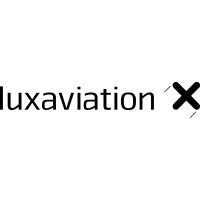Despite industry challenges from staffing to fuel prices, Luxaviation UK chief executive officer George Galanopoulos believes UK business aviation can continue building a prosperous long-term future.
As UK business aviation moves firmly into the post-pandemic ‘new normal’, we can begin to assess and predict the lasting impact of COVID-19 on our industry. Which changes since 2020 will become permanent and which will soon be forgotten? How else is the market developing? And how are perceptions of UK bizav shifting right now, inside and outside our industry?
Let’s start by looking at several challenges we face and then move through to examine some very encouraging signs for 2023 and beyond:
1. Staff and skills shortages are putting stress on UK business aviation.
As Marc Bailey, chief executive officer of the British Business and General Aviation Association (BBGA), says: “Pilot, engineer and air traffic controller shortages remain as the industry rebounds from the pandemic, when we saw seasoned professionals, often mentors to young people, leave the industry.”
Skilled operations, dispatch and customer care staff can also be hard to attract and keep in business aviation right now. We must continue the fight to ensure our industry welcomes absolutely everyone of talent, whatever their background.
On a more positive note, commercial carriers no longer take our pilots, as business aviation is often more attractive than the airline industry for flight deck and cabin crew. Alongside the basics, such as attractive salaries, we must continue to promote the fact our pilots have more varied working lives than their airline counterparts, meeting and talking to fascinating people every day.
2. The fuel market is volatile.
After 10-year lows in 2020, prices have risen above pre-pandemic levels. And, realistically, many analysts expect years to pass before sufficient capacity becomes available to relieve the strain on oil prices. Although price risk management and hedging options exist, designed to help aviation mitigate exposure to future fuel prices in these uncertain times, we are all proceeding with caution.
3. Securing a sustainable future remains critical.
We must not only make progress, we must also communicate that progress to stakeholders, from politicians and passengers to climate change activists.
As BBGA’s Bailey says: “Business aviation continues to take environmental responsibilities very seriously. For over a decade, our sector has been a pioneer in aviation, with a number of ambitious voluntary commitments to cut CO2 emissions.”
Nonetheless, our industry image still needs a reboot in the mainstream media and, by extension, the public mind. The industry should focus on positive news of sustainability initiatives, from carbon offset programmes to electric ramp vehicles rather than focusing on negative stories.
Bailey believes: “Our industry is under constant scrutiny from the general media as an easy target for taxation and pollution concerns. We at the BBGA challenge the common negative misconceptions with facts. Business aviation’s share of all aviation emissions is only 2%, meaning a contribution of just 0.04% of global man-made emissions.”
Each time we experience criticism of our industry, we need to ask how powerfully we have delivered the message to educate our opponents, in matters from the environmental progress we are making to the economic value of business aviation.
4. The highly respected annual Honeywell Global Business Aviation Outlook, unveiled this October, predicts new business jet delivery and expenditure levels will globally recover to 2019 levels by 2023.
“The business aviation industry is greatly benefiting from a wave of first-time users and buyers due in part to changing habits brought on by the COVID-19 pandemic,” says Honeywell’s president, Americas aftermarket Heath Patrick.
This post-pandemic recovery is happening much sooner than Honeywell had previously anticipated and, here in the UK, we can expect our share of the benefits. Honeywell calls global demand for new business jets “as high as we’ve seen it since 2015” and forecasts strong expenditures for several more years. Accelerating fleet addition rates in 2023 can only be good for our industry.
5. UK charter demand was huge in summer 2022.
Trends that have emerged or intensified in the past two years have included several families flying together, passengers being desperate to avoid airline and airport chaos, and travellers understandably prioritising the health benefits of business aviation. There are no reasons why these trends should not last into 2023 and beyond. Several families flying together next year, for example, could spread the cost of that holiday in these challenging economic times, travel in privacy with minimal risk of infection compared to busy airline flights, and avoid the lengthy and frustrating queues that seem inevitable at hub airports these days.
UK business aviation cannot be immune to the fluctuations of the domestic or global economy, and the rebound from the pandemic cannot last forever. The international Organisation for Economic Cooperation and Development predicts the UK faces the worst downturn of any advanced economy in 2023.
Nonetheless, we have faced and survived threats before, not least during and after the global financial crisis of 2008, when passengers found the idea of airline travel far more attractive than now. Many of the most positive business aviation trends discussed above could easily extend through and past 2023. The value of business aviation remains beyond dispute and the reasons to fly privately have only increased since the pandemic.
With hard work to fight our challenges and maximise our opportunities, the year ahead will be very exciting indeed.



